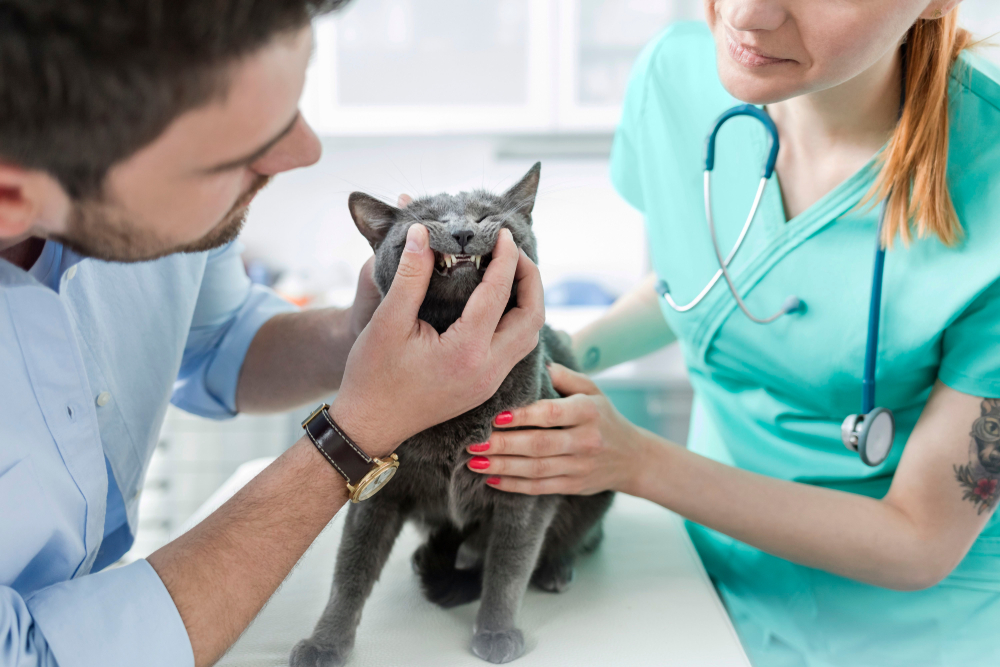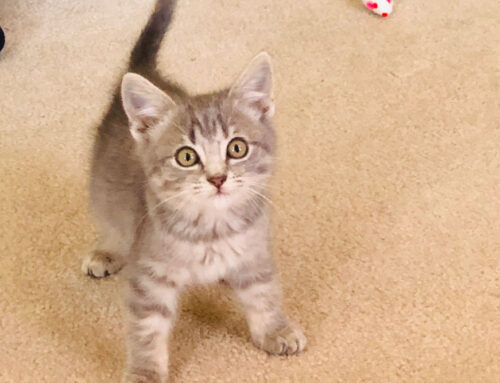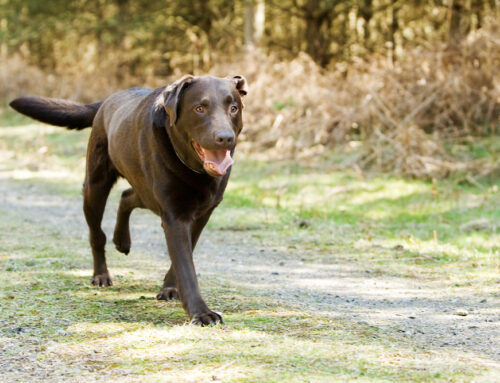You can and should brush your pet’s teeth. Daily toothbrushing is the best way to slow dental disease progression to help avoid serious health complications. Brushing your pet’s teeth isn’t as difficult as you may think, and our Liberty Veterinary Hospital team explains why daily toothbrushing is important and how to train your pet to accept the process.
Why is daily toothbrushing important for my pet?
Dental disease is a painful infection that affects most pets by the time they are 3 years of age. Bacterial accumulation on your pet’s teeth causes plaque deposits that harden into tartar if not removed. Tartar is a gritty substance that irritates the gingiva and allows the bacteria to invade under the gum line and damage the teeth’s supporting structures. Daily toothbrushing removes plaque before tartar develops, helping to prevent issues such as gingivitis, loose teeth, and tooth root abscesses, and organ damage, which can occur if bacteria enter your pet’s bloodstream.
Can I use a regular toothbrush to brush my pet’s teeth?
Your pet’s mouth is sensitive, and a regular toothbrush can irritate their gingiva and create an unpleasant experience. Options include:
- Pet-specific toothbrush — Toothbrushes with extremely soft bristles and a small head made specifically for pets are available.
- Dental wipes — Dental wipes can be wrapped around your index finger to gently wipe the teeth and gums.
- Gauze — You don’t have to purchase a fancy toothbrush to brush your pet’s teeth. Your pet may find gauze, which is lightly abrasive, less invasive than a pet toothbrush. Simply wrap a gauze square around your index finger and pinch the tail end with your thumb.
Can I use human toothpaste to brush my pet’s teeth?
Human toothpastes are not safe for your pet because they contain ingredients toxic to pets, including:
- Xylitol — Xylitol is an artificial sweetener that is added to many human dental products and has been associated with preventing tooth decay in people. The ingredient is good for people, but causes dangerously low blood sugar levels in pets and, in some cases, irreversible liver damage.
- Fluoride — In high doses, fluoride is toxic to pets. Human toothpaste is meant to be rinsed out of the mouth after brushing, but pets don’t understand this, and swallow the residue. Ingesting a large amount of fluoride is possible, but pets are more commonly affected by a chronic toxicity from ingestion over several months or years. Signs differ, depending on the scenario:
- Acute toxicity — Acute toxicity occurs about 90 minutes after ingesting a large fluoride dose, and shows signs that include drooling, vomiting, restlessness, fecal and urine incontinence, weakness, and seizures.
- Chronic toxicity — Small fluoride amounts ingested over time can lead to teeth discoloration, weakened bones, decreased appetite, and weight loss.
- Sodium lauryl sulfate (SLS) — Human toothpaste is designed to foam so you feel that the product is working. The chemical added to toothpaste to create this foaming action is SLS, which can cause gastrointestinal upset in pets who ingest sufficient quantities.
Numerous pet-friendly toothpastes on the market are available in flavors, such as beef, poultry, malt, seafood, and peanut butter, that make the experience positive for your pet. Choose products that contain enzymes to help reduce plaque accumulation.
How do I brush my pet’s teeth?
Most pets learn to accept toothbrushing if you go slowly and pack your patience. The process is best started when pets are young, but older pets can be trained to cooperate. Recommended steps include:
- Handling your pet’s mouth — You first need to get your pet used to their mouth being handled. Pet your four-legged friend, lift their lips, put your fingers in their mouth, and rub their teeth and gums. If they are reluctant, put peanut butter or tuna juice on your finger. Practice this daily until they are comfortable with you handling their mouth.
- Introducing the toothpaste — Find a toothpaste flavor that your pet enjoys, put a small amount on your finger, let them lick the toothpaste from your finger, and then gently insert your finger under their lip and rub their front teeth and gums.
- Introducing the toothbrush — Once your pet accepts the toothpaste, put a small amount on their toothbrush, and let them lick the toothpaste from the brush. Gradually introduce the brush into their mouth, gently brushing their front teeth. Start by brushing only one or two front teeth, and gradually brush more teeth at each session. Ideally, brush in a circular motion, aiming the bristles close to the gum line.
- Rewarding your pet — Praise your pet profusely during the toothbrushing, and give them a treat after each session.
- Making a habit — Brush your pet’s teeth daily to make a habit of the practice.
Does my pet need additional dental care?

Toothbrushing is the best way to remove plaque from your pet’s teeth on a daily basis, but professional veterinary dental cleanings also are necessary to remove bacteria from under your pet’s gum line where most damage occurs. These procedures are performed under general anesthesia to ensure your pet isn’t stressed and to allow our team to perform a thorough job. Dental X-rays are also performed, so we can devise an appropriate treatment strategy for your pet’s oral health.
Brushing your pet’s teeth is a great way to improve their dental health and overall wellbeing. Contact our American Animal Hospital Association (AAHA)-accredited team at Liberty Veterinary Hospital if you have concerns about your pet’s dental health, or if you need advice about what dental health products are right for your pet.








Leave A Comment